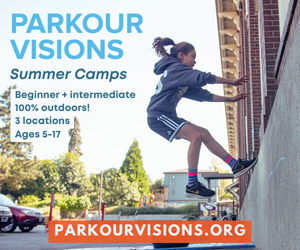It’s no secret, even to the littlest of kiddos. Something is going on.
You and I might be able to chat about the endless barrage of information coming at us from all directions that elicit a sense of impending doom (or maybe that’s just me), but how in the world are we supposed to talk to our kids in a way that’s both honest AND healthy?
To answer that question, I did what I always do when I need evidence-based answers: I spoke to a professional.
 Here are some of the helpful insights I received by talking with local psychotherapist Harini Sukumaran, whose specialties include children and women with anxiety. She is the Clinical Director and Founder of MindTree Holistic Counseling and Wellness Center.
Here are some of the helpful insights I received by talking with local psychotherapist Harini Sukumaran, whose specialties include children and women with anxiety. She is the Clinical Director and Founder of MindTree Holistic Counseling and Wellness Center.
What’s the best way to talk to our kids about both the virus and the corresponding pandemic?
There’s a lot of fear and anxiety going around right now, both for kids AND their parents. Kids can pick up on these changes and their brains may perceive them as a threat. As parents, the last thing we want for our kids is for them to feel unsafe.
Therefore, the best approach to having these conversations is to mindfully respond as opposed to reacting. Since kids are still developing their emotional regulation skills, if you start to panic, they are likely to start to panic, too. You want to come to these conversations around the pandemic with as level a head as possible. Not only so you do freak out your kid, but so you don’t confuse them either.
Meet your child where they are at. Take their feelings about the situation and name them, validate them, and normalize them. The idea is to emotionally connect with them on their level. Doing this will help them understand what exactly they are feeling and how to communicate these feelings in the future. Additionally, having a better understanding of their emotions can help your child feel calmer and more in control of the present situation.
If your child is old enough to understand certain emotions, make a physical list, and write down all of the worries they are experiencing. Once some of these internal worries are externalized, it’s easier to gain an outside perspective. From there, it’s easier to approach each issue one by one, working through them in an honest and thoughtful manner. It works like a kind of roadmap and gives your child a better sense of control.
How should we amend our approach based on our child’s age?
While there are some difficult concepts for younger kids to grasp, the best way to find out where you’re child is at emotionally, is by asking them. Keep the question open-ended and collaborate with them so that you find the answers “together”. You don’t want to end up projecting your worries or concerns onto the conversation. Validate and connect with your kids, and remind them that these feelings are not permanent.
A good introduction to the conversation can be as simple as:
There’s a lot going on right now. How are you feeling? Do you have any questions?
For older kids, it’s highly likely that they are hearing a lot of the tidal wave of information that you hear. Unfortunately, they may be hearing some misinformation as well. For these kinds of things, you can always ask them what they think something like “pandemic” or “social distancing” means and go from there with correct information.
Is there a difference between fear and anxiety?
While fear and anxiety often overlap, they are distinct feelings. Fear is typically an emotional response to an immediate threat that is happening in the present. Anxiety usually involves anticipating something in the future that is unknown (which may or may not be unlikely to actually happen). However, fear and anxiety elicit similar physiological responses like the fight, flight, or freeze response. They also feed into each other, fear causing more anxiety, and anxiety causing more fear, which leads to the interconnectedness of fear and anxiety.
Once we’ve had an initial conversation with our kids about the pandemic, how often should we be checking in?
It’s always a good idea to check-in with your kids on how they are feeling. This does not mean that you have to ask, “Are you okay?” every single day. But rather, you want to get a sense of their emotions, without making a huge deal out of it or projecting your own worries. A daily check-in activity can be helpful.
For younger kids in particular (but also older kids if they’re willing), you can try the “Color Your Heart with Feelings” activity. The idea is simple. Let your kid “show” what emotions led them throughout the day by assigning each feeling a color. It doesn’t have to be EVERY feeling (maybe pick the top 3-5) and depending on how much of that feeling they felt, they should color that much of their heart. For older kids, adding an intensity scale can be helpful sometimes as well.
This kind of activity acts as an invitation to talk through those feelings with your kid. It certainly helps if you do the activity as well, sharing your feelings with your child which will help them feel more emotionally connected (and more likely to share their feelings with you).
If daily check-ins feel like too much, try at least once a week. It’s up to you how often feels too often.
My kid seems to be handling things well at the moment. Are there any cues that I can look for that might indicate they are starting to feel anxiety around the pandemic?
Some overt behaviors that can be indicative of anxiety include irritability, impatience, and restlessness. Another, less obvious sign that your child could have anxiety is if they start to shut down communication and self-isolate. With the ladder, it’s a common response to being overwhelmed.
There are plenty of other issues that can cause a similar effect in your child that are not anxiety, so HALT and consider the following possibilities first:
- Hunger: We all get a bit more irritable and snappy when we’re hungry, hence the portmanteau hangry
- Anger: If something has happened recently that would make your child mad, (like a fight with a sibling) it’s okay for them to be angry, for a short while at least
- Lonely: Perhaps your kid is craving attention or connection
- Tired: Sleep is vital to full brain function, including emotional regulation
Harini was gracious enough to answer additional questions from our community of moms in the full interview, which you can watch below.
If podcasts are more your speed, check out our bonus podcast episode at Raising Cascadia for the full audio version.
You can keep an eye out for future talks with experts in our community by liking and following us over on the PMC Facebook Page.


















